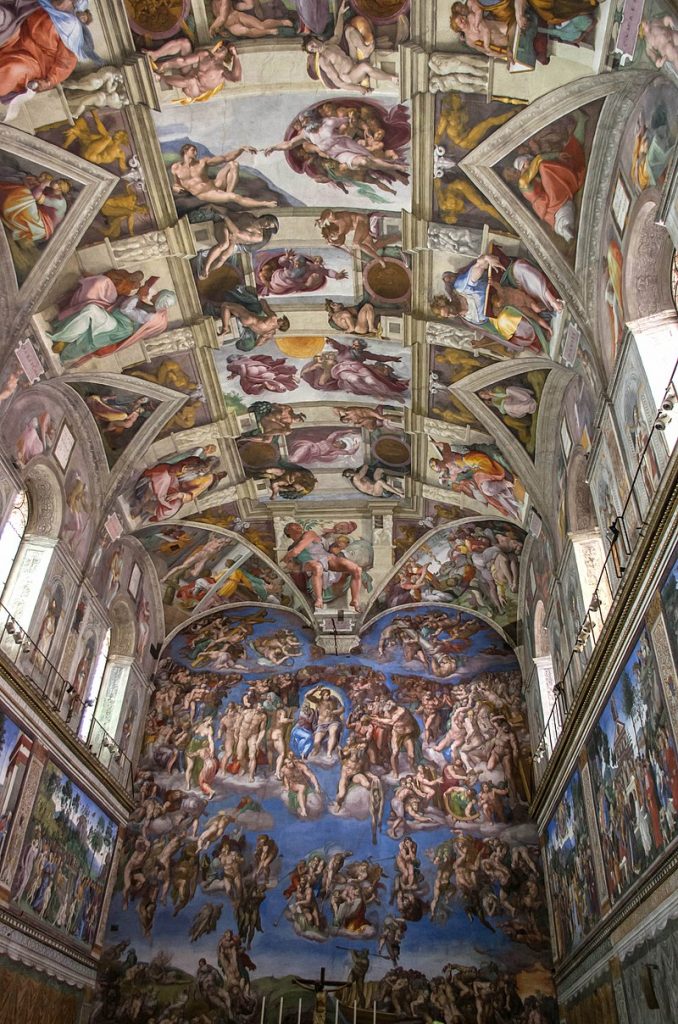
The Sistine Chapel ceiling is one of the most iconic and impressive works of art in human history. This masterpiece was created by the famous Italian Renaissance artist Michelangelo, who spent four years (1508-1512) painting the ceiling of the chapel with scenes from the Bible. The Sistine Chapel is located in Vatican City, Rome, and is considered a landmark of the Renaissance era.
The Sistine Chapel was built in the late 15th century for Pope Sixtus IV and was intended to serve as a private chapel for the Pope and his cardinals. The chapel is known for its stunning architecture, with its walls adorned with intricate frescoes depicting stories from the Bible. However, it is the ceiling of the Sistine Chapel that draws the most attention.
The Sistine Chapel ceiling is a masterpiece of art that depicts nine scenes from the book of Genesis. The central panel shows the creation of Adam, where God is seen reaching out to touch Adam’s finger, giving him life. This panel is the most famous and most recognizable of all the paintings in the Sistine Chapel. The other panels depict various scenes from the creation story, such as the creation of Eve, the temptation and fall of Adam and Eve, and the great flood.
The Sistine Chapel ceiling is a work of art that was commissioned by Pope Julius II, who wanted to restore the glory of the Papal States. Michelangelo was chosen to paint the ceiling because of his reputation as a great artist, even though he had never painted frescoes before. Michelangelo accepted the commission with reluctance, as he considered himself a sculptor, not a painter. However, he rose to the challenge and spent four grueling years painting the ceiling, often working upside down to reach the high parts of the ceiling.
The Sistine Chapel ceiling is a masterpiece of art not only because of its subject matter but also because of its technical brilliance. Michelangelo used a unique painting technique called “buon fresco,” which involved painting on wet plaster. This allowed the colors to penetrate the plaster, creating a vibrant and long-lasting painting. Michelangelo’s use of color and shading created a sense of depth and perspective that was unprecedented at the time.
The Sistine Chapel ceiling has been the subject of much debate and interpretation over the years. Some see the paintings as a celebration of the glory of God and the Catholic Church, while others see them as a critique of the corruption and excesses of the Church. Michelangelo himself was not very religious and may have included subtle criticisms of the Church in his work.
Today, the Sistine Chapel ceiling is one of the most visited and revered works of art in the world. Visitors from all over the globe come to marvel at Michelangelo’s skill and the beauty of the paintings. The Sistine Chapel remains an important symbol of the Renaissance era and a testament to the power of art to inspire and uplift the human spirit.
In conclusion, the Sistine Chapel ceiling is a masterpiece of art that has stood the test of time. Michelangelo’s skill and technical brilliance created a work of art that is both beautiful and meaningful. The Sistine Chapel ceiling continues to inspire and awe people today, centuries after it was first painted. It is a reminder of the power of art to transcend time and speak to the human soul.
